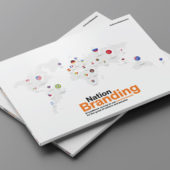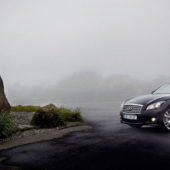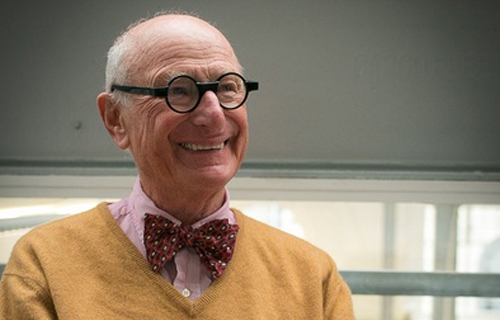With Arab and foreign visitors swarming Lebanon this summer, from the malls in Achrafieh, Dbayeh, Dora and Verdun to the clubs and restaurants in Gemmayze and downtown, and the mountain enclaves from Broumana to Bhamdoun, it is obvious to the naked eye that Lebanon is more than ever a prime vacation destination.
However, this summer season stood out for more than just the growing influx of tourists that graced Lebanese shores. This past season also saw an unprecedented amount of international publicity for Lebanon and its capital city, with articles in the New York Times and Paris Match praising all the city has to offer and CNN videos declaring Beirut “the party city.” Add to that the push to vote Jeita Grotto one of the new “wonders of the world” and you would think that Lebanon was finally having its day in the sun.
Dubai’s shattered reputation
On the opposite side of the spectrum, another state was facing much more negative publicity. As Dubai felt the impact of the global financial crisis, the international media were more than eager to officially declare it bust, recounting in juicy detail how expats are leaving the Emirate in droves, some, according to one article, even sleeping in their luxury vehicles.
As Lebanon shone in the spotlight and Dubai faced a barrage of bad press, one had to wonder: did country branding play any role in building or harming the image of each?
If we examine what has been done in the region in terms of country branding, we might find that examples of solid and consistent country branding are few and far between. Several countries or states have tried to establish their own identity by creating a logo, such as in the case of Qatar, which has used its logo in its communication of events and initiatives taking place in the country. Others, such as Abu Dhabi, have even gone so far as to flesh out what their identity stands for and to communicate with their population and visitors through a website and a few cultural events. Bahrain even undertook a full-fledged campaign of regional and international press ads, TV commercials and online advertising with the slogan “Business Friendly Bahrain,” aiming to attract global companies and investors to the country. Dubai branded itself as a hub of tourism and business in the region and the place where everything is always bigger and better.
Yet the majority of these efforts cannot be considered as part of a holistic country-branding program. In Bahrain, for example, although the country’s campaign was clear, this business-oriented message was not complimented by messages targeting other stakeholders that could give the country a well-rounded identity. Instead, audiences were left only with a vague impression of Bahrain’s business environment. With other countries in the region, there was also a lack of consistency in communicating what each state stands for and how it differentiates itself or what added value it has to offer versus its neighbors.
Land of missed opportunities
Lebanon, however, presents a different case entirely. Despite its many political and security setbacks, this tiny state is a country branding dream, with all the best ingredients to make it a well-established and memorable brand, from its nature and vibrant social scene to the many thousand years of culture on offer, and its unique and varied population. Unfortunately, though, this winning formula has been little exploited throughout the post-civil war years. The lack of coordination and funds within the government has meant that although the Ministry of Tourism, along with other private partners, has been able to produce several TV commercials throughout the years, these efforts were not enough to entrench one clear identity and message about Lebanon that people across the globe can recognize and identify with.
During the first few years of Lebanon’s reconstruction after the civil war, there were attempts at country and city branding that began with the well-known and recognizable “Beirut” logo popularly used on storefronts and restaurants across Lebanon and the region ever since. The “Beirut” identity certainly held a great deal of potential, but the failure to build on this identity and communicate what it stood for, minimized its ability to cross-over to becoming a national symbol. Moreover, an important element has been missing from any branding efforts that have been undertaken. Although well-intentioned and infused with the spirit of putting Lebanon on the map, the nomination of Jeita to become one of the new wonders of the world and the branding of different areas of Lebanon, from Baalbek to Byblos as part of different cultural festivals, have not been part of a larger national communication strategy that can link all of these initiatives to a larger Lebanon brand.
Wanted: Brand Lebanon
Yet a solid communication strategy that will effectively position Lebanon in a way that Lebanese agree with and foreigners, investors or tourists, are inspired by must be based on a national consensus. This might seem like an overly ambitious and politicized task asking Lebanese in general to agree on their view of Lebanon, especially to those who believe Lebanon’s identity can be developed overnight as part of a quick talent or graphic design contest. But grasping the essence of Lebanon should be done through market research into different segments of the population to gather insights on the different elements that Lebanese admire about their country, beyond the cliché “you can ski and swim in one day.”
Research can even look into foreign investors and visitors’ expectations, in order to identify the strongest prevailing misperceptions of Lebanon as well as what they would like to know about the country. These leasons should help develop a clear positioning for Lebanon that reflects its plurality and can be communicated to different stakeholders in a consistent way, providing the guidelines for developing a brand identity that is used everywhere from international TV commercials, to guidebooks, press ads in travel and business publications and even in the branding of cultural and touristic events.
Yet the branding of Lebanon should not be limited to the development of an identity. Effective country branding means holistic communication ranging from interviews with prominent Lebanese artists, businesspeople and musicians, sending delegations of talented Lebanese to perform abroad under the new brand’s umbrella, to airing short documentaries and ads about Lebanon on international satellite stations. As part of introducing the new Lebanon brand, activities can take place in Lebanon and in countries around the region introducing people to what Lebanon stands for through food, music, special videos and even interactive contests. The combination of these initiatives will help create a memorable brand for audiences that they look to when choosing where to vacation or invest.
The next question that comes to mind is “where will the government get the money for all of this communication?” The answer is that although the government must lead any national branding exercise, the private sector has an important role to play, as it has done throughout the years, in supporting any communication related to promoting Lebanon. Just as private corporations have sponsored arts and cultural festivals, helping make these successes, and Middle East Airlines has helped promote Lebanon through in-flight advertising, companies can help fund the development of a Lebanese brand identity and its accompanying communication. Public-private partnerships will help enrich the quality of communication about Lebanon, drawing on companies’ expertise in branding and promotion.
Additionally, many communication activities can have a big impact with a small budget, including the dissemination of viral videos. Initiatives that create a public relations buzz without breaking the bank range from getting the largest Lebanese tabbouleh dish into the Guinness Book to getting recognition for Lebanon’s historic or natural wonders.
Going viral
Individuals, like the private sector, can also be instrumental in spreading the word about a new brand and its communication campaign. This was seen all across the worldwide web this summer with Lebanese posting videos and articles promoting Lebanon on social networks and emailing these to everyone they know.
Although Lebanese are currently launching initiatives to get their national cuisine and landmarks noticed, as well as sending information about Lebanon to their friends around the world, these efforts are missing the elements that could make a greater impact. These activities need to be tied into a larger brand and positioning for Lebanon to help audiences understand their purpose, rather than seeing them as ad hoc initiatives. Viral communication should inspire those people who can help spread the brand’s message to not only accept the new brand, but embrace it as their own and agree that what is being said in the communication is what they would have chosen to say if someone asked them about their country.
Such powerful country branding that strikes a chord with audiences is more than an aesthetically pleasing logo or an appealing campaign that invites us to visit a country for some sun and fun. When country branding is the result of a well-built strategy based on a national consensus, the identity that is created and the resulting communication takes on a life of its own, becoming a symbol of the country’s narrative in such a way that people no longer realize which was created first: the country or the brand.
Article by Nohad Mouawad, Zeina Loutfi and Ramsay G. Najjar, first published here.




